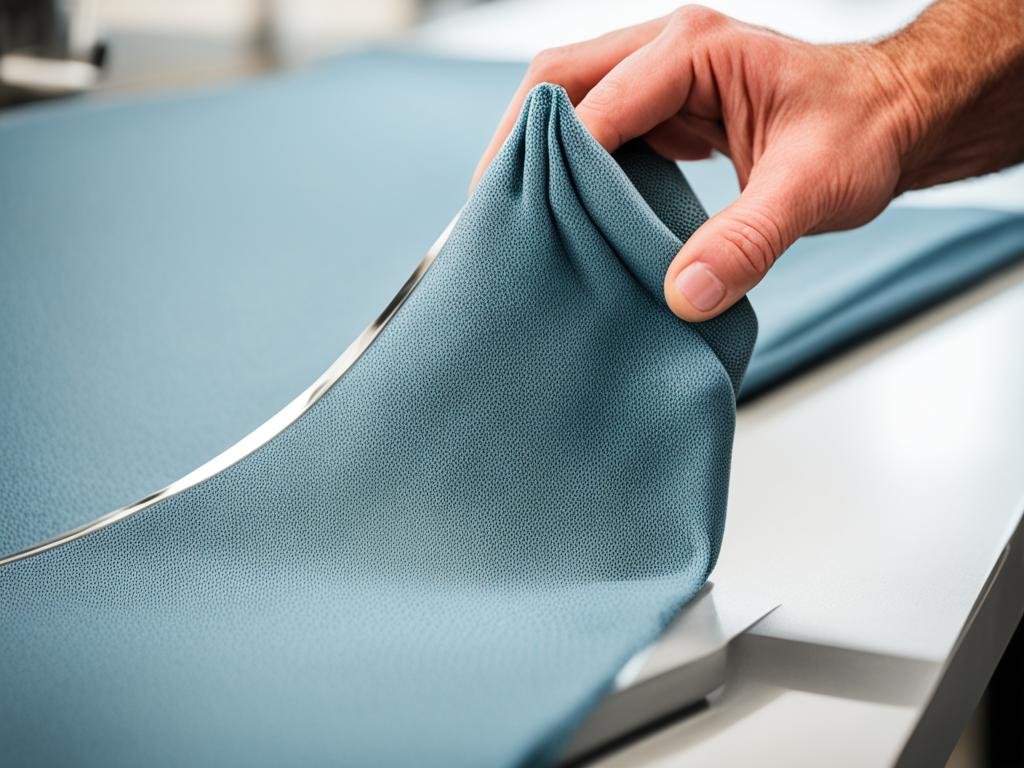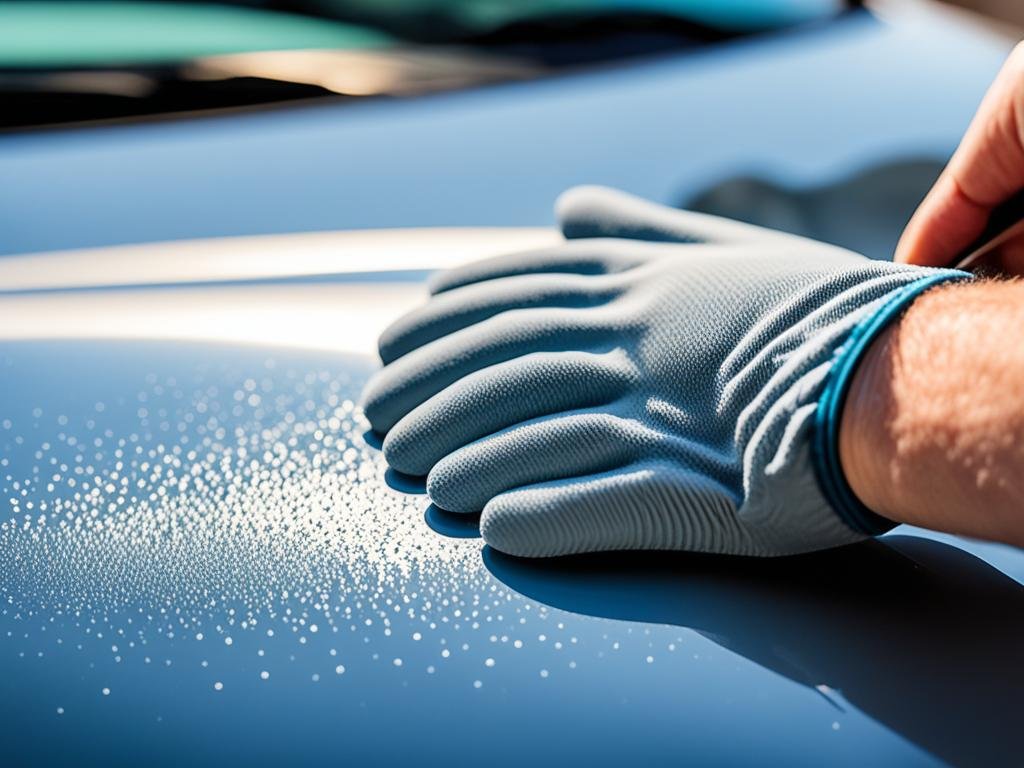
How to Apply Metal Polish
When it comes to restoring the shine and luster of metal surfaces, choosing the right metal polish is crucial. The level of oxidation on the metal determines the type of polish that should be used. Understanding the differences between heavy metal polish and light metal polish is essential in achieving effective results.
Heavy metal polish is specifically formulated with more aggressive abrasives, making it ideal for heavily oxidized metal surfaces. These abrasives work by physically removing the oxidation through gentle abrasive action. This type of polish is recommended for deep oxidation and stubborn stains on metals such as aluminum and stainless steel.
On the other hand, light metal polish relies on the chemical reaction between the polish and the metal to remove oxidation. It is designed for mildly oxidized metal surfaces where the oxidation layer is thinner. Light metal polish is most effective for metals such as brass, copper, and silver.
Choosing the right metal polish based on the oxidation level is crucial as using the wrong type can potentially damage the metal. For heavily oxidized surfaces, using light metal polish may not yield desirable results, while utilizing heavy metal polish on lightly oxidized metal may be too aggressive and cause unnecessary abrasion.
Therefore, it is important to assess the oxidation levels on the metal surface before selecting the appropriate metal polish. This can be done by visually inspecting the metal and determining the severity of the oxidation. Lightly oxidized metals typically have a dull appearance, while heavily oxidized metals may have a rough and discolored surface.
By choosing the right metal polish, you can effectively remove oxidation and restore the shine of your metal surfaces without causing any damage. Ensure to follow the manufacturer’s instructions and take necessary precautions when applying metal polish.
Comparison of Heavy Metal Polish and Light Metal Polish
| Criteria | Heavy Metal Polish | Light Metal Polish |
|---|---|---|
| Abrasive Level | High | Low |
| Suitable for Heavily Oxidized Metal | Yes | No |
| Chemical Reaction with Metal | Minimal | Essential |
| Recommended Metals | Aluminum, Stainless Steel | Brass, Copper, Silver |
| Result | Aggressively removes oxidation | Gently removes oxidation |
Choosing the right metal polish is crucial for achieving the desired results. Assess the oxidation levels on the metal surface and select either heavy metal polish or light metal polish accordingly. By doing so, you can effectively rejuvenate the appearance of your metal surfaces and maintain their shine and beauty for years to come.
Step-by-Step Guide to Applying Metal Polish
Applying metal polish is a simple process that can restore the shine and luster to your metal surfaces. Follow these step-by-step instructions for effective results:
- Start by shaking the bottle of metal polish to ensure proper mixing of the product.
- Take a clean microfiber applicator and apply a few dime-sized dots of metal polish onto it. Avoid overloading the applicator.
- Gently work the polish into the metal surface using linear, back and forth strokes. There’s no need to apply excessive pressure, as the polish will do the work for you.
- As you work the polish into the metal, you may notice that the contamination turns black. This is a result of the chemical reaction between the polish and the metal.
- Once you’ve covered the entire metal surface, take a gray microfiber towel and wipe away any excess product. This will reveal the rejuvenated, shiny metal underneath.
- If you want to further enhance the shine and protect the metal, consider applying a sealant or wax. This additional step will provide added shine and protection against future oxidation.
By following this step-by-step guide, you’ll be able to apply metal polish effectively and achieve impressive results. Remember to work the polish into the metal using a microfiber applicator, wipe away excess product, and optionally apply a sealant or wax for added shine and protection.

Now that you know how to apply metal polish, let’s explore alternative methods for larger areas or specialized surfaces in the next section.
Alternative Methods for Applying Metal Polish
While the hand application method works well for most metal surfaces, there are alternative methods that can be more efficient and effective, especially when dealing with larger areas or specialized surfaces.
When you need to polish a large area of metal, such as the side of a big steel truck, using a machine can save both time and effort. A popular choice for machine polishing is the TORQ10FX, paired with an Orange Hex-Logic Pad. This combination provides the right amount of power and abrasiveness to remove oxidation and restore the metal’s shine. Simply follow the same steps as the hand application method, but swap out the hand applicator for the machine.
For diamond plate surfaces, which often have grooves that can trap oxidation, using a machine with a Microfiber Cutting Pad is recommended. The machine’s oscillating motion combined with the cutting pad’s texture helps to effectively remove oxidation from deep within the grooves, leaving the diamond plate looking clean and polished.
Benefits of Using a Machine for Metal Polish Application:
- Time-saving: Machines can cover larger areas more quickly compared to manual application.
- Efficiency: Machines provide consistent pressure and motion, ensuring an even application of the polish.
- Improved results: The power and abrasiveness of the machine can help remove stubborn oxidation and restore the metal’s original shine.
- Less physical strain: Using a machine reduces the physical effort required, making the polishing process more manageable.
Whether you’re polishing a large area or working on a specialized surface, using a machine can be a valuable alternative method for applying metal polish. It allows for faster and more efficient results, while minimizing physical strain.
Next, let’s explore commercial polishes and homemade alternatives for achieving a polished and shiny metal surface.
Commercial Polish and Homemade Alternatives
When it comes to polishing metal surfaces, there are both commercial polishes and homemade alternatives available. Using a commercial metal polish specifically formulated for different types of metal can yield optimal results. However, if you don’t have access to a commercial polish, there are effective homemade alternatives you can try.
Commercial Metal Polish
Commercial metal polishes are designed to cater to specific metal surfaces, providing targeted cleaning and polishing action. These polishes often contain specialized ingredients that effectively remove oxidation, tarnish, and stains from the metal. By using a commercial polish, you can achieve outstanding results with minimal effort.
| Recommended Commercial Metal Polishes | Suitable for Metal Type |
|---|---|
| Brand X Metal Polish | All metal types |
| Brand Y Aluminum Polish | Aluminum surfaces |
| Brand Z Brass Polish | Brass surfaces |
Homemade Alternatives
If you don’t have access to a commercial metal polish, there are several homemade alternatives that can be just as effective in restoring the shine to your metal surfaces.
For cleaning metal bakeware: Oxalic acid, such as Bar Keeper’s Friend, is a recommended homemade alternative. Create a paste by mixing oxalic acid with water and apply it to the metal bakeware. Let it sit for a few minutes before scrubbing with a sponge or soft brush. Rinse thoroughly and dry.
For silver: You can create a homemade silver polish using baking soda and aluminum foil. Line a glass dish with aluminum foil, add hot water, and mix in baking soda. Immerse the silver items in the solution and let them sit for a few minutes. Rinse the items with water and dry them with a soft cloth.
For copper or brass: A paste made of vinegar and baking soda can work wonders. Mix equal parts of vinegar and baking soda to create a paste. Apply the paste to the copper or brass surface and let it sit for a few minutes before scrubbing with a soft brush. Rinse the surface thoroughly and dry.
For stainless steel: Vinegar or olive oil can be used as a homemade polish for stainless steel. Simply apply a small amount of vinegar or olive oil to a microfiber cloth and rub it onto the stainless steel surface in circular motions. Continue until the desired shine is achieved.
Using these homemade alternatives can be cost-effective and environmentally friendly while yielding impressive results.
With both commercial metal polishes and homemade alternatives at your disposal, you can choose the method that best suits your needs and preferences. Whether you opt for a specialized commercial polish or utilize household ingredients, the goal is to restore your metal surfaces to their original shine and beauty.
Cleaning the Metal Surface Before Polishing
Before applying metal polish, it’s essential to clean the metal surface thoroughly. This step is crucial to ensure that the polish can effectively restore the shine and luster of the metal. Cleaning the metal surface before polishing removes dirt, grime, and any other contaminants that may hinder the polishing process.
To start, gather the following materials:
- Liquid dish soap
- Warm water
- Towel
- Non-abrasive liquid detergent
Follow these steps to clean the metal surface:
- Step 1: Fill a basin or sink with warm water.
- Step 2: Add a small amount of liquid dish soap to the water and mix it until it creates a soapy solution.
- Step 3: Dip a sponge or soft cloth into the soapy water and gently scrub the metal surface. Pay attention to areas with visible dirt or grime buildup.
- Step 4: Rinse the metal surface with warm water to remove the soap residue.
- Step 5: Dry the metal surface thoroughly with a towel to prevent water spots or corrosion.
If the metal piece has non-metal elements attached, such as a wooden back to a metal picture frame, it’s important to detach these elements before cleaning and polishing the metal. Ensure that you handle the non-metal elements with care to avoid any damage during the detachment process.
Once the metal surface is clean, it’s ready for the polishing process. You can now proceed to apply the metal polish and restore the shine and brilliance of your metal piece.
| Materials | Steps |
|---|---|
| Liquid dish soap | 1. Fill a basin or sink with warm water. |
| Warm water | 2. Add a small amount of liquid dish soap to the water and mix it until it creates a soapy solution. |
| Towel | 3. Dip a sponge or soft cloth into the soapy water and gently scrub the metal surface. Pay attention to areas with visible dirt or grime buildup. |
| Non-abrasive liquid detergent | 4. Rinse the metal surface with warm water to remove the soap residue. |
| 5. Dry the metal surface thoroughly with a towel to prevent water spots or corrosion. |
Conclusion
After following the step-by-step guide and applying the right metal polish, you can achieve a polished and shiny surface on your metal objects. The importance of selecting the appropriate metal polish based on the level of oxidation cannot be overstated. By choosing the right polish, you can effectively remove oxidation and restore the metal’s original shine.
If you’re dealing with larger areas or specialized surfaces, alternative methods such as using a machine or specific pads can be a game-changer. These methods save time and effort while delivering excellent results. Whether you’re polishing a big steel truck or intricate diamond plate, incorporating machinery into your process can provide a more efficient and even application.
Before polishing, don’t forget the crucial step of cleaning the metal surface. Removing dirt and grime using a non-abrasive liquid dish soap ensures that the polish can work effectively. By detaching any non-metal elements and using the right detergent, you create the ideal canvas for the polishing process.
In conclusion, by following the proper technique and selecting the suitable products, you can transform oxidized metal into a polished and lustrous state. Whether it’s for decorative purposes, maintenance, or restoring antique pieces, metal polish is the key to achieving a beautiful and radiant metal surface.
FAQ
How do I choose the right metal polish?
When selecting a metal polish, consider the level of oxidation on the metal. Heavy metal polish is more aggressive and suitable for heavily oxidized surfaces, while light metal polish relies on a chemical reaction and is best for mildly oxidized metal.
What are the steps for applying metal polish?
Firstly, shake the bottle and apply a few dime-sized dots of polish to a microfiber applicator. Work the polish into the metal using back and forth strokes. Wipe away excess product with a gray microfiber towel to reveal a shiny surface. Optional: apply a sealant or wax for added shine and protection.
Are there alternative methods for applying metal polish?
Yes, for larger areas, you can use a machine like the TORQ10FX with an Orange Hex-Logic Pad. For diamond plate, use a machine with a Microfiber Cutting Pad.
Can I use homemade alternatives for metal polish?
Yes, for different metal types, you can use homemade alternatives. For metal bakeware, use oxalic acid like Bar Keeper’s friend. Baking soda and aluminum foil work as a silver polish. Vinegar and baking soda paste are suitable for copper or brass, while vinegar or olive oil can be used for stainless steel.
How should I clean the metal surface before polishing?
Use non-abrasive liquid dish soap and warm water to remove dirt and grime. Rinse the surface and dry it with a towel. If there are non-metal elements attached, detach them before cleaning and polishing the metal. Use a non-abrasive liquid detergent to ensure the surface is clean.
What are the final thoughts on applying metal polish?
By choosing the right metal polish, following the step-by-step guide, and cleaning the metal surface, you can achieve optimal results. Alternative methods can be used for larger areas or specialized surfaces. Restoring the shine and luster of metal is attainable with the proper techniques and products.
Source Links
RELATED POSTS
View all



